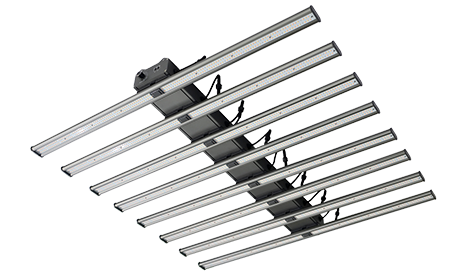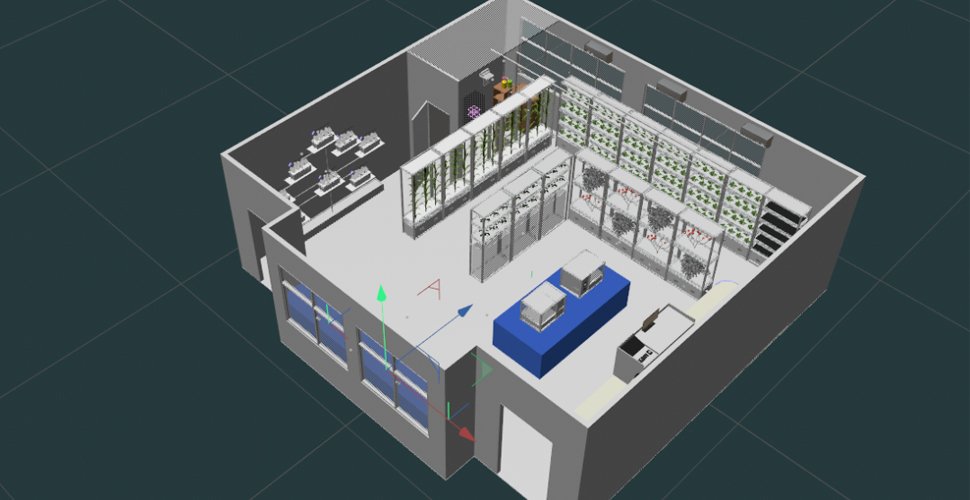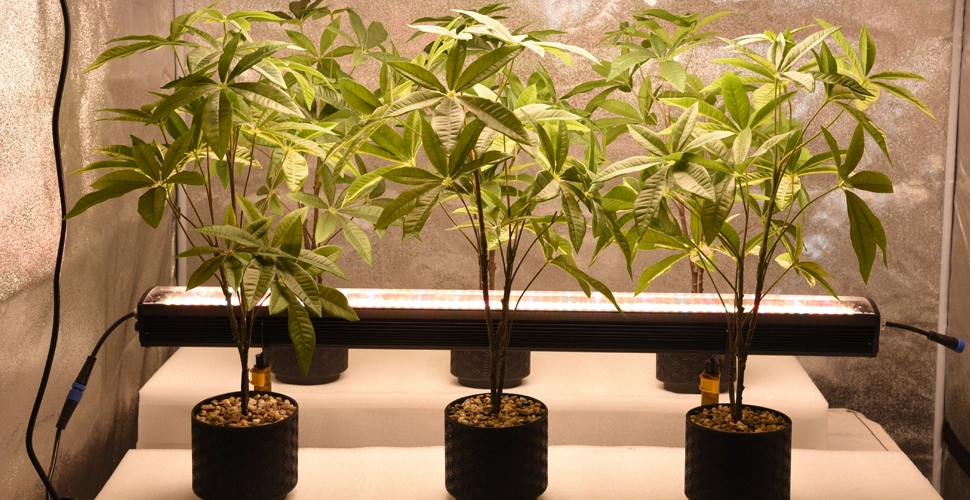Would you like to see your plants transform into lush, vibrant green wonders with the help of full spectrum LED lights?
Just imagine, right in the comfort of your own home, providing your leafy companions with the perfect blend of sunlight. That’s where the power of full spectrum lighting comes into play, unlocking a world of possibilities for indoor gardening enthusiasts.
In this article, we delve deep into the remarkable advantages of full-spectrum LED grow lights and explore whether they truly benefit plants.
Let’s embark on this journey of discovering the enchantment of full spectrum LED lighting and uncovering the path to a thriving indoor garden.
What is A Full Spectrum LED Grow Light?
In simple terms, a full-spectrum LED grow light is an LED light that provides plants with the complete spectrum of light they need.
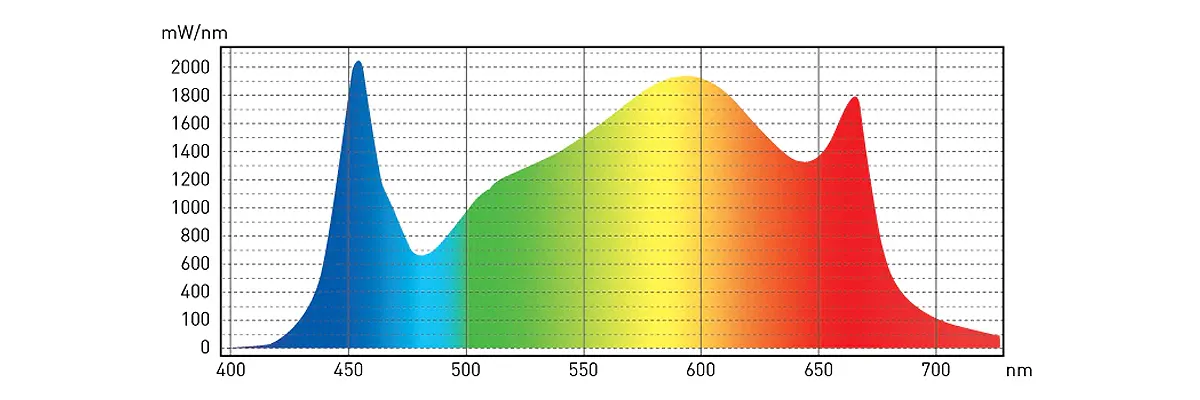
Here’s a breakdown of the different types of light it encompasses:
- Ultraviolet (UV) Light: Assists in nutrient absorption and influences flower bud dormancy.
- Visible Light: The primary light source that provides energy for photosynthesis.
- Infrared (IR) Light: Regulates plant growth and flowering.
Regular white LED lights only provide visible light, but full spectrum LED lights can simultaneously provide a range of lights including red, blue, green, yellow, and white, as well as UV and IR light.
In other words, full-spectrum LED grow lights can cover the entire spectrum range from 290nm to 850nm, providing plants with the essential nutritional light they need.
They fulfill the intensity and spectral requirements of different growth stages.
Do Full Spectrum LED Grow Lights Work?
The answer is definitely yes. Full-spectrum LED grow lights are the ideal choice for indoor cultivation.
Gardening under these lights allows plants to flower almost year-round, even during winter months.
Full spectrum lighting can also accelerate or slow down growth rates, promote root development, and enhance coloration.
Different wavelengths of light trigger different responses in plants. By increasing the number of certain colors of light during specific growth stages, you can guide your plants to grow in the desired manner.
Let’s take a look at some insights shared by indoor farmers in the field of indoor farming.

Case 1: Enhancing the Quality of Baby's Breath with Full-Spectrum LED Lighting
In order to meet market demands and cater to special occasions, there is a need for faster growth and higher quality in baby’s breath flowers.
Generally, high-quality baby’s breath requires a minimum of 10 hours of daily light exposure. Therefore, using LED supplementary lighting has become an ideal choice for flower growers.

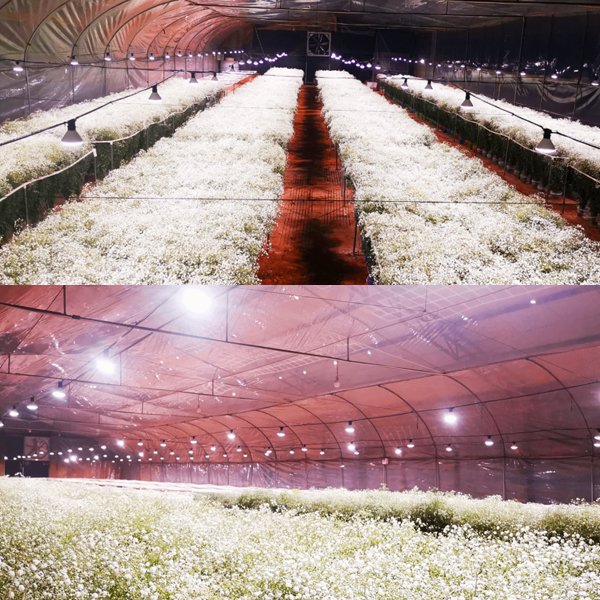
By providing continuous and adequate supplemental lighting using LED full spectrum grow lights, the greenhouse receives ample light. After undergoing the flowering induction process, the baby’s breath appears whiter, and the density of flower growth increases.
Overall, the quality of baby’s breath flowers is significantly improved, resulting in a notable increase in economic benefits. This effectively meets the demand for high-end floral products and contributes to the development of the flower industry in Yunnan, China.
Case 2: Indoor Dragon Fruit Cultivation Achieved with Full-Spectrum LED Lighting
In recent times, many vegetable farmers have taken advantage of greenhouse facilities to grow fruits.
One such farmer is Mr. Hu Tianlong, who, despite being in his 50s, successfully cultivates tropical fruits in his greenhouse, a rarity in northern China.
As we all know, in northern China, the daylight hours significantly decrease by October. To overcome this challenge, Mr. Hu decided to incorporate full-spectrum LED supplementary lights in his greenhouse.
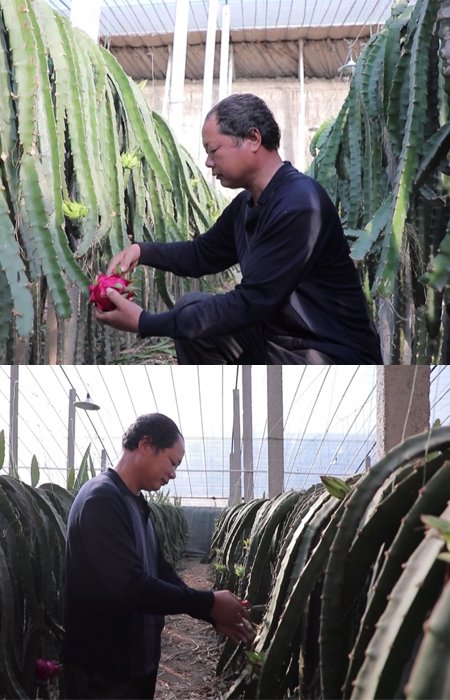
By providing continuous and adequate supplemental lighting using full spectrum grow lights, the greenhouse receives ample light, resulting in astonishing outcomes.
Mr. Hu’s greenhouse yielded three additional crops compared to previous years, enabling year-round fruit production without interruption.
Case 3: Full-Spectrum LED Lighting Boosts Cannabis Cultivation
In the state of Colorado, USA, a licensed cannabis cultivation facility has installed a full-spectrum LED lighting system to enhance indoor cannabis yields.
Due to the balanced spectrum provided by LED lights, the plants experience vigorous growth, healthy foliage, and abundant flowering.
Compared to traditional lighting systems, full spectrum LEDs also offer significant energy savings. This not only reduces operational costs but also promotes the adoption of more sustainable and environmentally-friendly cultivation practices.
Harnessing the full potential of the spectrum, the plants’ cannabinoid profiles improve, resulting in high-quality buds with desired cannabinoid and terpene profiles.
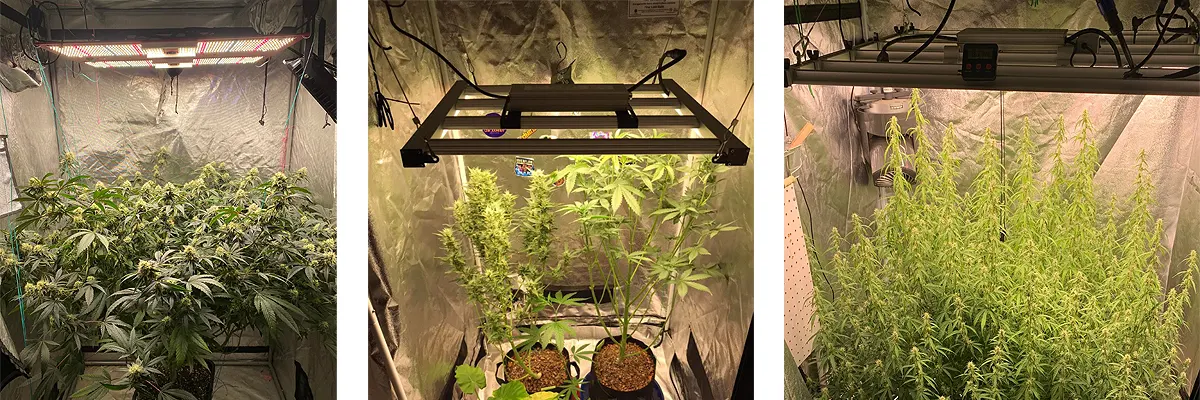
What are the Benefits of Full Spectrum LED Grow Lights?
If you’re considering upgrading your indoor cultivation with grow LED light full spectrum, understanding their benefits will help you make an informed decision.
- Provides Full Nutritional Light: Grow light full spectrum LED offers not only visible light but also include ultraviolet (UV) and infrared (IR) wavelengths, providing plants with a complete range of nutritional light.
- Uniform Light Distribution: Full-spectrum LED lights ensure even coverage across all areas, allowing you to expect higher yields and consistent growth throughout your cultivation space.
- Higher Efficiency: Full-spectrum LED lights are highly efficient, with energy conversion rates surpassing 50%. They consume less energy, resulting in lower electricity bills and increased cost savings.
- Enhanced Precision: Grow lights LED full spectrum allow precise control over intensity and spectrum, catering to the light requirements of plants at different growth stages. This enables you to optimize growth and maximize plant health.
- Cost Savings: Full-spectrum LED lights have a lifespan of approximately 50,000 hours, significantly longer than traditional lighting options. They require less frequent replacements, saving you the cost of frequent bulb changes.
- Environmentally Friendly: Full-spectrum LED lights are mercury-free, aligning with sustainable development principles and promoting eco-friendly cultivation practices.
- Convenient Control: Full-spectrum LED lights can be precisely controlled based on temperature, humidity, and CO2 concentration, creating an ideal growth environment for plants. This enables fine-tuned automation to optimize plant growth conditions.
- Closer Hanging to Canopy: LED grow lights emit low levels of heat, allowing the fixtures to be positioned closer to the plants without risking heat damage.
- Versatile Applications: LED grow lights are well-suited for various space sizes. Whether it’s growing tents, small-scale greenhouses, or vertical farming facilities, LED grow lights can be adapted to meet the lighting needs of different cultivation environments.
Full Spectrum vs Red/Blue Grow Light
Performance
Full-Spectrum LED Grow Lights:
Provide a wide range of wavelengths, promoting overall plant growth and development.
Suitable for all stages of plant growth, including seedling, vegetative growth, and flowering.
Mimic the intensity and quality of sunlight, resulting in healthier plants and stronger root systems.
Red and Blue LED Grow Lights:
Focus on specific wavelengths, primarily red and blue, targeting key aspects of plant growth.
Red light stimulates flowering and fruiting, while blue light promotes plant growth and leaf development.
Allow growers to customize lighting to optimize specific growth stages and achieve desired results.
Spectrum
Full-Spectrum LED Grow Lights:
It covers the entire spectrum, including blue, green, red, and sometimes even ultraviolet (UV) and infrared (IR) wavelengths.
They provide a balanced distribution of light, enhancing the plant’s ability to absorb and utilize different wavelengths effectively.
Red and Blue LED Grow Lights:
Red and blue LED grow lights have a narrower spectrum, typically emitting only red and blue wavelengths.
However, these lights may lack certain beneficial wavelengths for overall plant health.
Yield
Full-Spectrum LED Grow Lights:
Support optimal growth throughout the plant’s life cycle, resulting in higher yields and healthier plants.
Promote fuller foliage, abundant flowering, and increased fruit production.
Red and Blue LED Grow Lights:
Enable growers to customize lighting conditions to maximize specific growth stages, leading to improved yields in these specific plant parts.
However, they may not provide the same comprehensive spectrum as full spectrum grow lights for plants, potentially limiting the overall potential of the plants.
Are Full Spectrum Grow Lights Better?
The full spectrum led plant grow light may not be the optimal lighting solution for indoor plant cultivation.
The fixed spectrum lights provide simplicity, as they come preconfigured with a specific spectrum optimized for general plant growth.
Replicating natural light has a drawback, which is the inclusion of a significant amount of visible spectrum that plants cannot absorb, resulting in wasted energy.
But the adjustable full spectrum led grow lights LEDs appear to offer more versatility in terms of power, allowing growers to customize the light spectrum according to specific plant requirements.
To address this concern among cannabis growers, the FC06 series developed by Auxgrow offers an excellent solution.
What sets the FC06 series apart is its enhanced spectrum for each stage of growth. It incorporates ultraviolet (UV) light, intensified blue light, and red light, with the ability to independently adjust each light spectrum.
UV light provides several potential benefits for cannabis plants, including increased cannabinoid (THC) production, improved resin formation, and enhanced resistance to pests and bacteria.
The LED adjustable spectrum grow light aims to assist your cannabis cultivation in achieving higher yields and greater profitability.
It allows for fine-tuning of the emitted light spectrum, reducing energy waste and minimizing heat generated by the lighting fixtures. In other words, this helps reduce the need for additional cooling measures in your growing environment and can significantly lower electricity bills.
Contact Auxgrow Today
When it comes to indoor cultivation, it is crucial to choose full-spectrum LED grow lights to maximize plant growth. Adjustable spectrum lighting is also an ideal choice for cannabis growers.
Since entering the plant lighting industry in 2010, Auxgrow has been dedicated to providing professional LED grow lighting solutions.
Through research focused on different plants, we offer scientifically tailored spectrum distribution, precise light intensity, and optimal lighting duration. This enables rapid plant growth, controlled flowering periods, improved quality, and efficient coloration, helping controlled environment agriculture break free from the traditional dependence on natural sunlight.
If you are looking for full spectrum LED lights to plan your indoor cultivation venture, reach out to Auxgrow.
Contact us today for our one-stop plant lighting customization services and experience how Auxgrow can significantly increase the productivity and profitability of your indoor farming endeavors.
Jayes
As a Digital Marketing Manager at AUXGROW, Jayes combines a passion for hydroponic systems and expertise in LED grow lights. With hands-on experience and a deep understanding, Jayes guides you through the world of sustainable cultivation.



